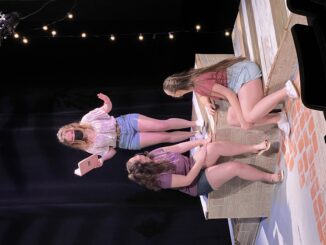Timothy Rush | Staff Writer
08/29/19
Many shows fly under the radar and don’t largely receive a lot of mainstream attention. Sometimes it’s because they’re bad, and sometimes it’s because the genre is not one that people pay a large amount of attention to. A strong example of the latter is The Worst Witch, a British-German fantasy show, published for international release by Netflix. Season 3 came out for Netflix over the Summer, debuting for American audiences.
Worst Witch is a children’s show based on the long-running book series by Jill Murphy. The first book, The Worst Witch, came out in 1974. Her most recent book, First Prize for the Worst Witch, came out in 2018. They are marvelous children’s books and worth checking out.
The Netflix series follows the school-related adventures of Mildred Hubble, played by renowned Game of Thrones actress Bella Ramsey, the titular “worst witch.” Mildred just discovered her magical abilities, and the show relates to her school days at Cackle’s Academy, an all-female school for young witches to advance their craft. She is joined by her friends Maud Spellbody (Meibh Campbell in season 1, Megan Hughes in season 2 onward) and Enid Nightshade (Tamara Smart), as they butt heads with Ethel Hallow (Jenny Richardson). Their shenanigans also get them into trouble with the faculty, especially Miss Hardbroom (Raquel Cassidy) and Miss Cackle (Claire Higgins), and defend the school from the likes of Agatha Cackle (also played by Claire Higgins), Miss Cackle’s estranged and evil sister.
The first thing that may strike a lot of people is that the show is geared towards a younger audience. Many early episodes have plotlines that will strike a chord with children more so than with older viewers. However, the show does develop into one both younger and older audiences can enjoy. Season 3 largely builds off this foundation, introducing a focus on themes of regret, responsibility and the often-forgotten moral of how even the greatest of intentions can lead to horrible results.
A standout character for the show, and especially the third season, is Miss Hardbroom. Largely the stern potions teacher and deputy headmistress of Cackle’s Academy, she at first is displayed as an antagonistic force. She largely stands against progressive ideas, believing that only the best of the best should be taught at Cackle’s Academy and all others should be removed. She evolves to reveal that her character is more complex than the rough conservative she is originally portrayed as. Her character turns out to be one of unfortunate circumstance and guilt. To say the absolute least, she has a lot more in common with the worst witch Mildred than first assumed and has a strong tie with season 3’s newest addition to the cast Indigo Moon (Kelsey Callandine-Smith).
Another standout part of the show is the special effects. The series has a focus on magic, so magical effects are an essential part throughout the series’ run. It is interesting to note that in the first season, the effects are not up to par with even older shows. However, this comes across timelier, almost like a callback to the simple effects of shows in the past. The effects do get better as of season 3, but it’s apparent that the choice to have more simple effects is more of a choice on the part of the showrunners, as despite the better effects, the show still does keep a lot of the simple green screen and magical effects of previous seasons.
The show follows a semi-serialized format. Some are more filler episodes that fit into the context of the season, but the series does have season arcs that transform across the season and push the plot forward, typically related to the theme of that season. Season 3 focuses more on the themes of good intentions with bad results, and the effects that regret can have on a person, both old and young. The morals and themes are delivered in such an authentic way that many will find themselves connecting with the various characters.
Another core theme of the show is, to put it simply, emotion. The way people feel can influence their actions, which in turn affect how others react to those people. This core theme is central to various characters throughout the show’s running: How regret can transform someone from a fun-loving person into a hard and uncaring person. The need to be recognized and be special can warp someone from mere ambition to near-sociopathic greed, but in turn how forgiveness can transform both the self and the person being forgiven to be something better than before. The emotional turmoil within the show, as seen in the various characters, will touch audiences in many ways, and can even be a tearjerker for many.
All-in-all, The Worst Witch is a hidden gem of modern television. It’s a great show for adults and children — one worth checking out. Season 3 came out on Netflix over the summer, so there’s plenty to watch. Furthermore, the books are amazing and worth a read. Jill Murphy has put a lot of thought and soul into these books and will be an enchanting read for anyone, from child to adult.




